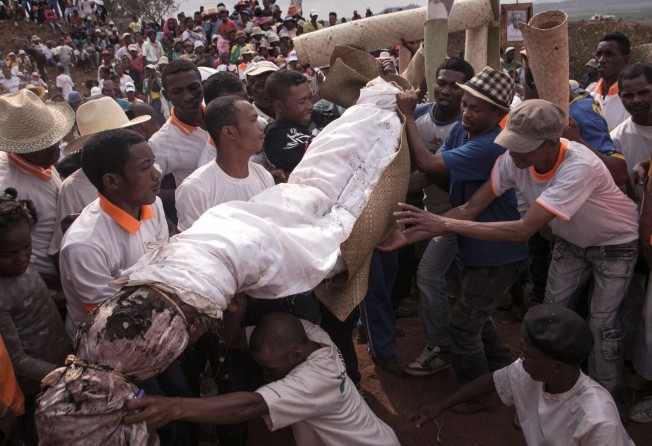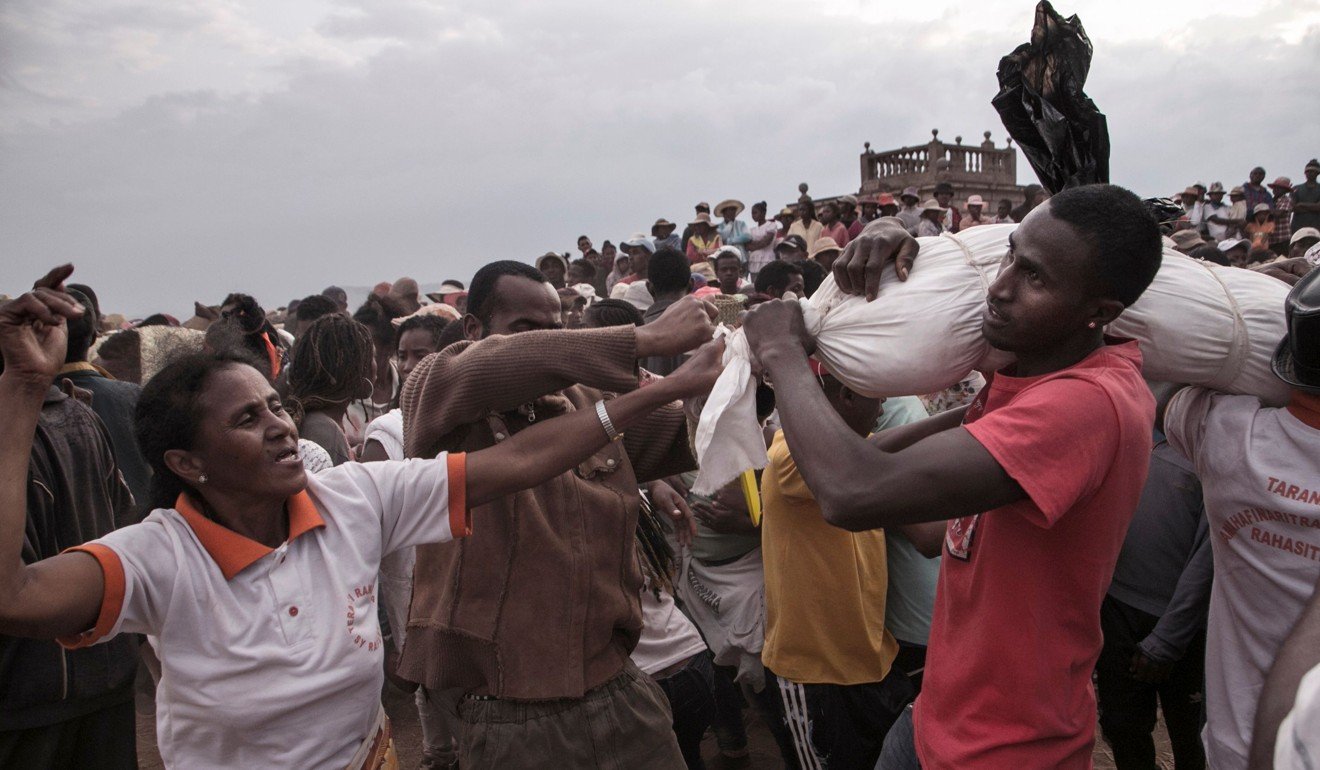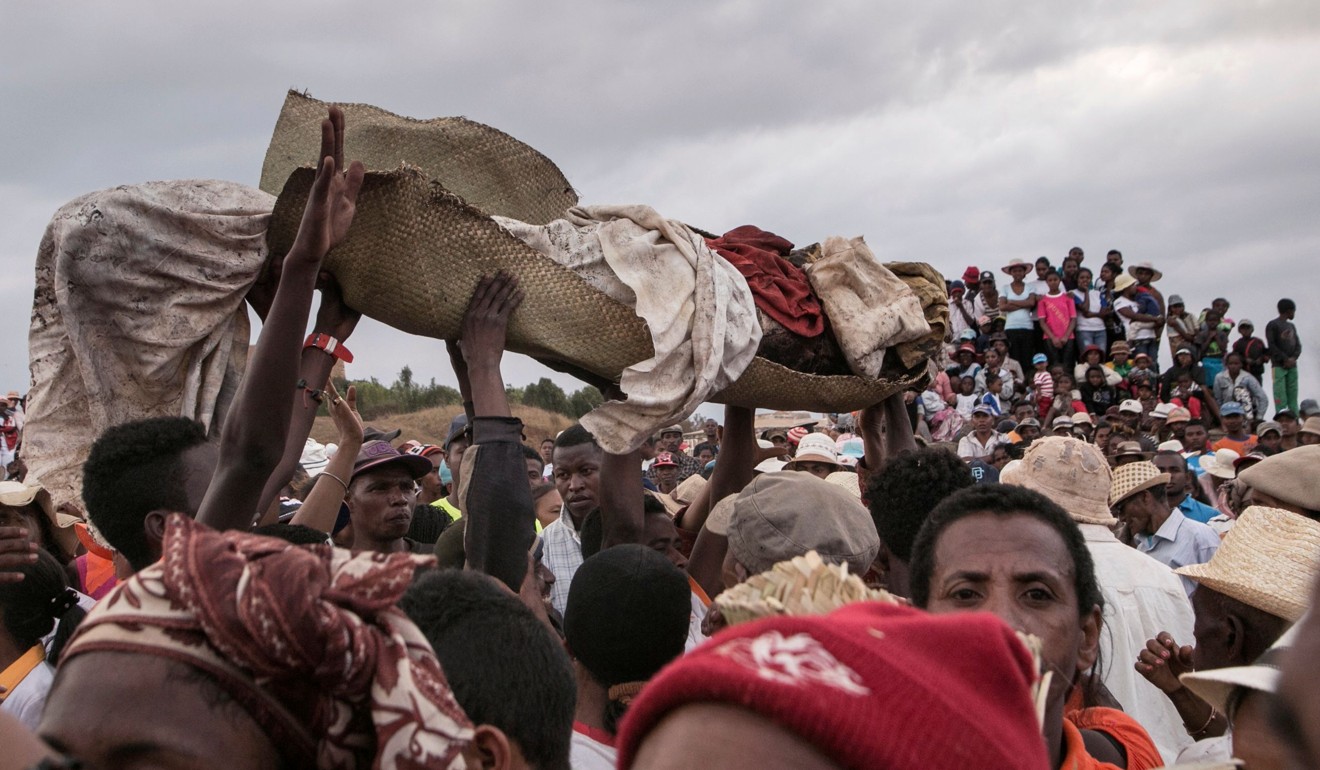Plague alert in Madagascar over ‘turning’ ritual that raises the dead from their tombs
The ritual can be shocking for some but for those taking part it is an intense celebration accompanied by music, dancing and singing

In Madagascar, ceremonies in which families exhume the remains of dead relatives, rewrap them in fresh cloth and dance with the corpses are a sacred ritual.
But an outbreak of plague sweeping the Indian Ocean island nation has prompted warnings that the macabre spectacle, known as the turning of the bones or body turning, presents a serious risk of contamination.
On a recent baking hot Saturday in Ambohijafy, a village outside the capital Antananarivo, a “turning” procession snaked through the streets in a fevered carnival atmosphere bound for the cemetery.
For the community’s few hundred residents, the time for “famadihana” – the local name for the ceremony – had arrived.
The unique custom, originating among communities that live in Madagascar’s high plateaux, draws crowds every winter to honour the dead and to honour their mortal wishes.
“It’s one of Madagascar’s most widespread rituals,” historian Mahery Andrianahag said. “It’s necessary to assure cosmic harmony … it satisfies our desire to respect and honour the ancestors so that they can be blessed and one day return.”
At the head of the procession, 18-year-old Andry Nirina Andriatsitohaina eagerly awaited the big moment as a uniformed band played on loud trumpets.
“I am extremely proud to go to rewrap the bones of my grandmother and all of our ancestors. I will ask them for blessings and success in my school leavers’ exams,” he said.
In front of the family mausoleum, the assembled men dug into the earth and opened the tomb’s door as women and children looked on.
One by one, the wrapped remains were carried out into the open and carefully placed on a mat where they were rewrapped, or “turned” in the new shrouds. Oly Ralalarisoa, 45, was overcome with emotion.
“I am so happy to be able to exhume my great-great-great-grandfather,” Ralalarisoa said. “It means that their descendants can ask for blessings for the next nine years.”
Relatives invite all their fellow villagers to attend the ceremony and to take part in the procession as well as musical and food festivities, but the wrapping of the body is a purely family affair.

The dead may be “turned” more than once but only every five, seven or nine years, and can be wrapped in several shrouds if different parts of the family or loved ones want to honour them.
Close by, Isabel Malala Razafindrakoto had tears in her eyes as she held the wrapped body of her son, who died aged just three years old.
“I’m happy to once again see my son and to fulfil my duty,” she said.
The customary ritual, rather than a religious rite, can be shocking for some, but for those taking part, it is an intense celebration accompanied by music, dancing and singing, fuelled by alcoholic drinks.
I will always practise the turning of the bones of my ancestors – plague or no plague. The plague is a lie
As the gathering in the Ambohijafy cemetery drew to a close, the bodies were carefully returned to their resting places after one last dance. As soon as the ritual was over, the mats on which the bodies were laid were pulled up.
Veteran participants will store them under their mattresses until the next famadihana. Looking after the mats is often seen in Madagascar as bringing good luck. But some doctors warn that they can also transmit germs and infections.
And, at a time when Madagascar is enduring its most lethal outbreak of the plague in years, the practice of body turning has raised fears among health officials.
Since August, the disease has infected more than 1,100 people, with 124 deaths. Officials this week cautiously welcomed a slowdown in infections.
Health ministry epidemiologists have long observed that plague season coincides with the period when famadihana ceremonies are held from July to October.
“If a person dies of pneumonic plague and is then interred in a tomb that is subsequently opened for a famadihana, the bacteria can still be transmitted and contaminate whoever handles the body,” said Willy Randriamarotia, the health ministry chief of staff.

To limit the danger, rules dictate that plague victims cannot be buried in a tomb that can be reopened and instead their remains must be held in an anonymous mausoleum. But the local media have reported several cases of bodies being exhumed covertly.
Despite the serious risks publicised by the authorities, few in Madagascar question the turning ceremonies.
“I don’t want to imagine the dead like forgotten objects. They gave us life,” said Helene Raveloharisoa, a regular at the ritual. “I will always practise the turning of the bones of my ancestors – plague or no plague. The plague is a lie.”
Josephine Ralisiarisoa was even more strident in her view that the plague risk had been exaggerated.
“The government in power is short of money for the next presidential poll [in 2018], so they invent things to get cash from lenders,” Ralisiarisoa said. “I have participated in at least 15 famadihana ceremonies in my life. And I’ve never caught the plague.”